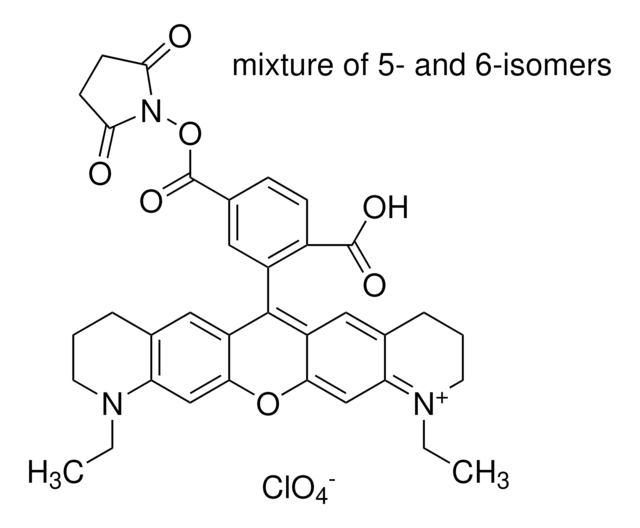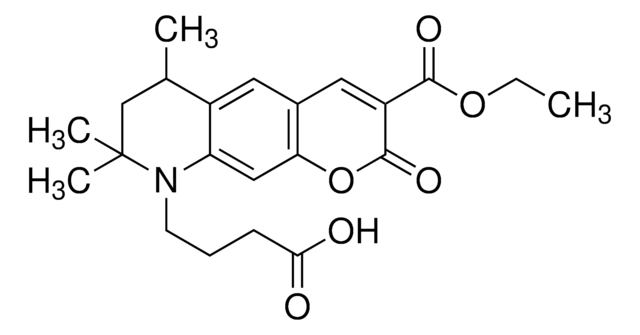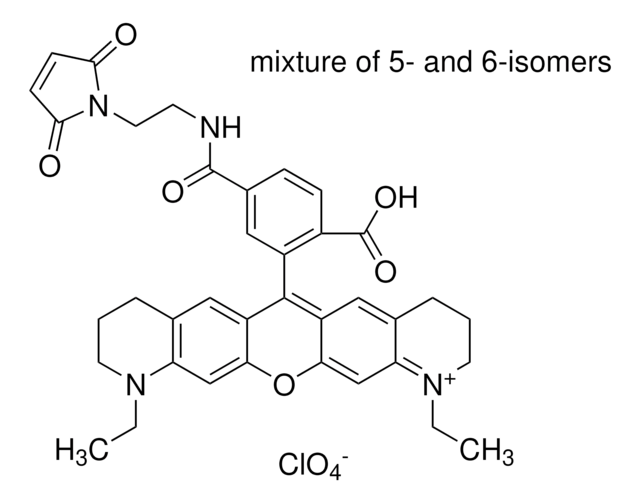Kluczowe dokumenty
75784
Atto 565
BioReagent, suitable for fluorescence
About This Item
Polecane produkty
linia produktu
BioReagent
Próba
≥90.0% (HPLC)
Formularz
powder
producent / nazwa handlowa
ATTO-TEC GmbH
λ
in ethanol (with 0.1% trifluoroacetic acid)
absorpcja UV
λ: 562.0-568.0 nm Amax
przydatność
suitable for fluorescence
temp. przechowywania
−20°C
Szukasz podobnych produktów? Odwiedź Przewodnik dotyczący porównywania produktów
Zastosowanie
Atto 565 shows a molar extinction of 120.000 and QY of 92% in water (97% in ethanol). Decay time is 3.4 ns.
Informacje prawne
Kod klasy składowania
11 - Combustible Solids
Klasa zagrożenia wodnego (WGK)
WGK 3
Temperatura zapłonu (°F)
Not applicable
Temperatura zapłonu (°C)
Not applicable
Środki ochrony indywidualnej
Eyeshields, Gloves, type N95 (US)
Wybierz jedną z najnowszych wersji:
Masz już ten produkt?
Dokumenty związane z niedawno zakupionymi produktami zostały zamieszczone w Bibliotece dokumentów.
Klienci oglądali również te produkty
Produkty
Pomiar czasu życia fluorescencji ma przewagę nad pomiarami opartymi na intensywności. Zastosowania obejmują testy czasu życia fluorescencji, wykrywanie i FLI.
Nasz zespół naukowców ma doświadczenie we wszystkich obszarach badań, w tym w naukach przyrodniczych, materiałoznawstwie, syntezie chemicznej, chromatografii, analityce i wielu innych dziedzinach.
Skontaktuj się z zespołem ds. pomocy technicznej



